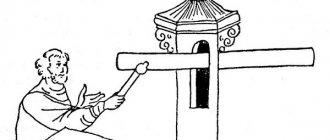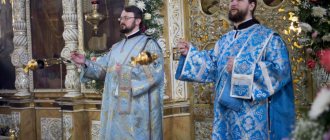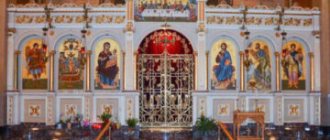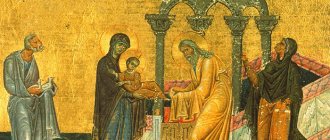In Ozhegov's dictionary
BOW, -a, m. 1. Bowing the head or; the upper part of the body as a sign of greeting, gratitude, submission. Deep item (low, almost to the ground). Earthly p. (to the ground; also translated, to whom: deep gratitude. Earthly p. to the scientist for his scientific feat). To bow down (bow during prayer). Weigh p. (bow deeply; obsolete). To bow (to bow after bow; obsolete). 2. Greeting by bowing your head. Careless p. (nod). 3. transfer Wishing you well, hello. P. from relatives. Send, convey p. to someone. * To bow or bow to someone (colloquial) - to ask for help, assistance. || adj. bow, -aya, -oe (to 1 meaning; obsolete).
"What do we know about BOWING"
BOW
Have you ever thought about how you go on stage, how you bow... how to properly bow on stage in front of an audience?... Below are some facts about bowing.
The first thing a musician does when entering the stage is to bow. The very path to the stage and the fulfillment of this formal tradition, which has been well-established in the artistic environment for several centuries, matters both for the mental well-being of the performer himself (also, to some extent, is his indicator), and for the perception of him by the public.
The artist greets the audience with a bow and with a bow he thanks the audience for the reception and applause...
I think that every artist should know, understand and feel the process of what he does. So that the act of greeting and gratitude does not turn (sometimes for some) into formalism.
There are different types of bows.
For example, in the artistic environment, based on the technique of performing a gesture, there is a whole theater of bows, with the play of the eyes, face, hands and the whole body: Kniksen - a light and quick bow - a squat of a young debutante, joyful from the attention of the audience. A jubilant bow is an expressive, flying and sensual movement of the body when an enthusiastic diva “gives herself” to the audience. Curtsy is a free play by a coquette with a bow, like a dance step, with a deliberate demonstration of the dress, jewelry and herself. The tragic bow is a deep “Russian” bow that continues the dramatic role of the artist. An arrogant bow is when a diva curtsies deliberately slowly. And looking from head to toe with a mockingly ironic look at the admirer approaching with flowers, in the same slow motion he offers him his hand in such a way that he can only kiss it (if he is smart enough!). The same bow can be addressed to the entire hall, when the status and merits of the artist are higher than the level of the audience!
In Japanese etiquette, bowing is given special importance. All greetings in this country are accompanied by bows. Bowing (ojigi) is a visual reflection of social relations (the angle of inclination of the body matters; it can reach up to 90 degrees), an indicator of the relationship between the statuses of two persons bowing to each other. The ability to bow correctly is evidence of good manners and upbringing.
There are three types of bows: saikeirei - the highest form of greeting - a bow that is performed slowly, deeply and expresses complete respect. This is how one bows before the altar in a Shinto shrine, in a Buddhist monastery, or before the national flag. Previously, the saikeirei bow was also given to the emperor; after the war, the Japanese greet the emperor in the same way as other people. ordinary (ceremonial) - a bow in which the body tilts 20-30 degrees and remains in this position for about two to three seconds. If you greet while sitting on the floor, then your hands are placed on the floor, palms down, at a distance of 10-20 centimeters, your head is bowed so that it is above the floor at a height of 10-15 centimeters. light bow - a bow in which a slight tilt of the body and head is made, lasting only one second. Hands are kept at your sides or on your knees.
And, a little, about the history of the bow itself.
A bow, in its historical origin, is the movement and position of the body (posture) of a believer in the ritual of addressing a deity (prayer).
In the primitive era, also in the courts of the monarchies of Asia until the 19th century, this was the position of the body “prostrate”, that is, lying face down on the ground. In medieval Russia, the “prostrate” bow was borrowed from China through the Tatars (the ritual of receiving Russian princes by Tatar khans) and was practiced in the court rituals of the Russian Tsar until the 16th century (receiving ambassadors, submitting petitions, etc.). The source of the pose is the combination in one person of the functions of the ruler of despotism and the high priest (king - priest). In the Middle Ages, the procedure and forms of bowing to ambassadors were discussed for months and years by the State Councils, and messengers flew in both directions. In higher forms of religion, kneeling bow (“kneeling”) occurs when the worshiper, kneeling, bends down, leaning on his hands, and touches his forehead to the ground. Bowing in this form operates in Islam. To protect the body, a special “prayer rug” is placed under the knees. Touching the ground has come to mean in Christianity a sign of turning oneself to dust. Before this, in Russian paganism, as in Greco-Roman mythology, touching the earth (kiss), on the contrary, served as a sign of receiving strength and grace from the earth (see Russian epics). The custom of bowing to the ground appeared in ancient biblical times. This is how Solomon prayed at the consecration of the Jerusalem Temple (see: 1 Kings 8:54), Daniel in Babylonian captivity (see: Dan. 6:10) and other Old Testament righteous people. This custom was sanctified by Jesus Christ (see: Luke 22:41) and entered into the practice of the Christian Church (see: Acts 12:60; Eph. 3:14). Most often, kneeling occurs during Lent. Kneeling and rebellion, according to the explanation of St. Basil the Great, marks the fall of man through sin and his rebellion through the love of the Lord. In the church ritual of confession (also in everyday life), kneeling was a sign of sincere repentance and prayer for remission of sin. The folding of the hands near the face during prayer or secular bowing served as a sign of special reverence (the prohibition of looking at the deity). Bowing in solitary prayer (Pieta) is always accompanied by the gesture of folding the palms - Millet. "Angelus". A form of penance (also for vows) was the punishment of “beating off” the number of bows on the knees. Punishment of children was also a transformed form of bowing - “in the corner, on your knees!” The corner in the Slavic home was considered the abode of the household deity. During the Reformation era, Protestant churches abolished prayer bows (as a manifestation of pagan customs). In the era of chivalry, it became customary to bow by lowering the body to only one knee. This gesture signified personal freedom and dignity, and at the same time the voluntary acceptance of the vassal’s submission to his lord - in exchange for patronage. The lord's consent was accompanied by an offer of his hand for a sacred kiss. The gesture meant the transfer of vital force (also, the Russian epic “Svyatogor and Ilya Murovets”). With a large difference in status, during the bow the hem of the lord's clothing was kissed (the ritual of kissing the shoe of the Pope). When the status of the knights was equal, bows were exchanged - “curtsey” (from the Latin “re-verus, vereor, verentia”). When curtseying, the transfer of fortitude could be done by patting the shoulder - Velasquez. "Surrender of Breda." In the late Middle Ages, the knightly bow, bending only one knee, began to be widely practiced by nobles, even when praying in the (Catholic) church. In the courtly knightly cult of the Beautiful Lady, extending her hand for a kiss in response to a bow meant accepting the knight under her protection. The knight himself became the vassal of his Beautiful Lady. In a hidden form, this ritual was preserved in the European cult of the Virgin Mary (placed by popular reverence above Jesus Christ). The ritual of bowing to the lady begins to spread in the Middle Ages and reaches its peak in the Renaissance. This is facilitated by the amorous and erotic nature of the knightly ideal - a feat in the name of love, the liberation of the Virgin from captivity (the plot of Perseus and Andromeda). It is also believed that the ceremony is associated with the cult of sublime love in Muslim Spain and medieval Platonism. To Eastern Christianity, given the generally degraded position of women, the cult of the Holy Virgin and the ritual of European bowing are alien and incomprehensible. A relic of a bygone cult is the privilege (or necessity) of the modern woman to be the first to extend her hand for a handshake when meeting. The disappearance of the spirit of chivalry, the decline of the aristocracy and its replacement in Europe by the poorly educated nobility and bourgeoisie replaced (inverted) the content of the ritual of secular bowing. The seeker of protection became a woman and the curtsey took on a gendered character - a response to an offer of protection from a man. In the new ritual, a slight tilt of the head was sufficient for the man. In modern times, the cult of the Beautiful Lady retained only the kiss of the hand, which almost disappeared as a form of bow. In Russia, at court, the gesture spread only under Catherine II. Then, the nobles won the privilege of kissing hands, as an element of European education and culture. Revolutionary Valentinov recalled how surprised Lenin was when he kissed Krupskaya’s hand - “Yes, it turns out you are a nobleman!”
In Russia, public bowing on one's knees continued to be practiced in Russia on especially solemn occasions, during major upheavals in public life, at meetings and kissing of especially revered icons. In 1812, before the Battle of Borodino (“Battle of the Moscow River”), His Serene Highness Prince Kutuzov, commander-in-chief of the Russian army, knelt before the icon of the Smolensk Mother of God. The “waist” bow has become the universal form of bowing in Russia, both in church and in secular life. Among the people, a bow from the waist is a sign of respect, as well as agreement with the verdict of society, “peace.” As a sign of special affection, the right hand could be pressed to the left side of the chest - a “cordial” bow. The aristocracy and nobility did not use a bow from the waist in social life (a gesture of commoners). The exceptions were honoring with a bow (deep) the high clergy, members of the Imperial family, very old people of an ancient family and seriously ill people. The ritual of public bowing by aristocrats and even kings had one more rare exception - on the scaffold, before execution. At the same time, as a sign of repentance before the people and a sign of purity and innocence. In the ritual of honoring tsars during meetings of the Council, the Russian patriarch kissed the right shoulder of the tsar (“the right hand of God”). The bow during a knightly duel in Russia underwent a kind of metamorphosis among the common people and, in a new found form, entered the philosophy of military art: “You need to be able, when entering into a decisive fight, to take off your cap and throw it near you on the ground; this gesture disciplines a person and allows him to more firmly withstand the onslaught of the enemy.” The alarming mystery for a commoner of the gesture of kissing a hand is shown by I. Turgenev - “She, flushed with excitement, whispered, holding out her fragrant hands to me: “Kiss my hands, as you kiss their ladies in St. Petersburg drawing rooms”” (E and J. Goncourt. Diary).
Modernity
In modern colloquial speech, the concept of “bow” has been separated from the gesture and has become synonymous with the concept of “hello” - “bow,” “I bow,” etc. Along with a sign of respect, the bow gesture can also take on a mocking character (a sign of “exaggerated” respect) .
Based on all of the above, I think you will be able to draw a conclusion for yourself: how, when, how much and for how long to bow and whether to bow at all...
In the dictionary D.N. Ushakova
BOW, bow, husband. 1. A greeting performed by bowing the head or upper body. Didn't answer my bow. Bow when meeting. To bow to someone (see bow). “The ambassadors bowed and retreated backwards to the door.” A.N. Tolstoy. General bow (one to everyone present). | Low inclination of the body. To bow (during prayer; church). Prostration (to the ground, to the floor). 2. transfer Humble request (obsolete). “My beloved poet, I come to you with a request and a bow.” Fet (to Tyutchev). 3. Wishes of health and prosperity, hello. “From your distant sons I brought you a bow.” Pushkin. Give him my regards. I bow to you from my comrades. “And Prince Guidon lives there, he sent you his greetings.” Pushkin. • Go to bow to someone (neod.) - transl. obsequiously express devotion to someone, humiliate yourself in front of someone. Go with a bow to someone (neod.) - transl. make a humiliating request to someone.
Recommendations
- Title and greeting Governor of New South Wales
- "Taiwan - Cultural Etiquette." eDiplomat. Retrieved 2011-10-09.
- "China - cultural etiquette." eDiplomat. Retrieved 2011-10-09.
- "Vietnam - Cultural Etiquette." eDiplomat. Retrieved 2011-10-09.
- "Japan - Cultural Etqette." eDiplomat. Retrieved 2013-01-13.
- "Chinese Marriage Customs." eChina Romance. Archived from the original on 2008-06-05. Retrieved 2008-05-27.
- "家宝向地震灾区遇难者遗体三鞠躬." China Daily
. 2008-05-13. Retrieved 2008-06-25. - "華國鋒同志遺體在京火化." People's Daily
. 2008-09-01. Archived from the original on 2010-11-01. Retrieved 2009-07-22. - "The Kuomintang delegation pays respects to the mausoleum of Dr. Sun Yat-sen." People's Daily online
. 2005-03-31. Retrieved 2008-05-27. - "周铁农等参加纪念孙中山先生逝世 84周年纪念仪式." News from the National People's Congress
. 2009-03-13. Archived from the original on 2011-07-23. Retrieved 2009-07-22. - “Premier Wen rushes to Hunan Province to lead disaster relief efforts.” Xinhua
. 2008-01-29. Retrieved 2008-06-25. - "Defense Secretary Chen apologizes for 3/19 oversight." Chinese post
. 2008-05-27. Retrieved 2008-05-28. - "Archival copy." Archived from the original on 2018-11-26. Retrieved 2016-01-16.CS1 maint: zipped copy as title (link)
- Chaim H. Donin, Praying Like a Jew, 1980; pages 38-41.
- ^ a b
Albert Haase, OFM (4 February 2010).
Living according to the father's prayer: the path of the student
. InterVarsity Press. paragraph 83. ISBN 9780830878666. Christians have kept the holy name of Jesus for centuries. Western Christianity has developed the custom of bowing the head when the name of Jesus is mentioned. Pope Gregory X formalized this into law in 1274 at the Second Council of Lyon. Echoing the letter to the Philippians, the council stated: “Whenever this glorious name is remembered, especially during the sacred mysteries of the Mass, everyone should bow the knee of his heart, which he can do even by bowing his head.” - ^ a b c
Staunton, William (1839).
Ecclesiastical Dictionary: Containing a description of terms, phrases, and subjects relating to the external order, ordinances, worship, and customs of the Protestant Episcopal Church, with special reference to the Church in the United States
. Sherman and Trevett. paragraph 79. - ^ a b
Wheatley, Charles;
Corrie, George Elwes (1858). A rational illustration of the Book of Common Prayer of the Church of England
.
University Press. 145. When we come to the second article of this creed, in which the name of Jesus is mentioned, the whole community expresses reverence, which the Church (in regard to this passage from St. Paul, That in the name of
Jesus
every one knew should bow down
) expressly enjoins in in its eighteenth canon: commanding that “that during the divine service the Lord Jesus should be mentioned, all present should show due and humble reverence, as was customary [3], by witnessing thereby.” outward rites and gestures their inner humility, Christian determination and due recognition that the Lord Jesus Christ, the true eternal Son of God, is the only Savior of the world, in whom alone, in whom alone, are all the mercies, graces and promises of God to mankind for this life and the life to come is fully and completely included." [3] Worship of the name of Jesus, first designated by the Eighth Council of Lyon in 1274 AD, under Gregory X. At the Council of Avignon 1326 AD. indulgences were granted to those who worship the name of Jesus. at the Council of Beziers, 1351, a ten-day pardon was granted to those who worship this name when mentioned in worship. St. Basil's Cathedral 1435 resumes the order of bowing. Councilium Senonense, 1485. about the fear of the name of Jesus, Gray, Vindicat. Ch. of England, Part 2, p. 178, etc. - Gerl, Joseph (2008). The Wars of Worship in Early Lutheranism: Choir, Congregation, and Three Centuries of Conflict
. Oxford University Press. paragraph 111. ISBN 9780195365849. Retrieved April 27, 2022. - Dubruel, Michael (26 January 2007). A Practical Book of the Mass, Revised and Enlarged
. Our Sunday guest. paragraph 97. ISBN 9781592766659. - Holden, Harrington William; Wesley, John (1872). John Wesley in company with high-ranking ecclesiastics
. J. Hodges. paragraph 110. - Lambern, Edward Cyril Russell (1963). Anglican Services: A Book about Ritual and Ceremony in the Anglican Communion
. W. Knott. paragraph 39. - Senn, Frank K. (2012). Introduction to Christian Liturgy
. Fortress Press. paragraph 196. ISBN 9781451424331. - "The Novitiate's Handbook" (PDF). Madison First United Methodist Church. 2011. pp. 5–6. Archived from the original (PDF) on August 9, 2022. Retrieved on April 27, 2022. Walk around the railing on your knees and enter the altar. As you approach the altar, stop and bow at the same time to the cross.
- ^ a b
Pentz, Lundy (1998).
Language of the body
. Forward movement. paragraph 9. English law required worship at the altar when entering or leaving the church - at any time, and not just during the service. The altar itself was an object of worship because during the Eucharist it is here that consecration takes place and is thus, in a sense, the throne of Christ. Since most altars had a cross on them, generations of Anglicans began to think that the bow was pointed not at the altar, but at the cross. This gave rise to distinctive Anglicanism when processions and processional crosses - a bow made like a cross passing in a procession - were reintroduced in the 19th century.










